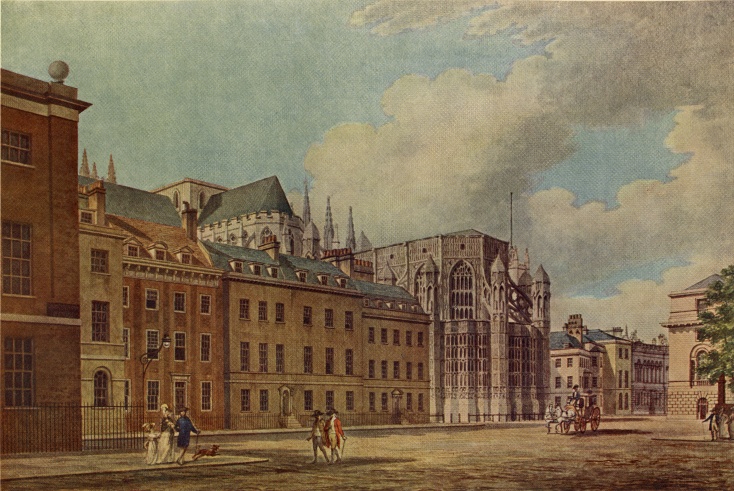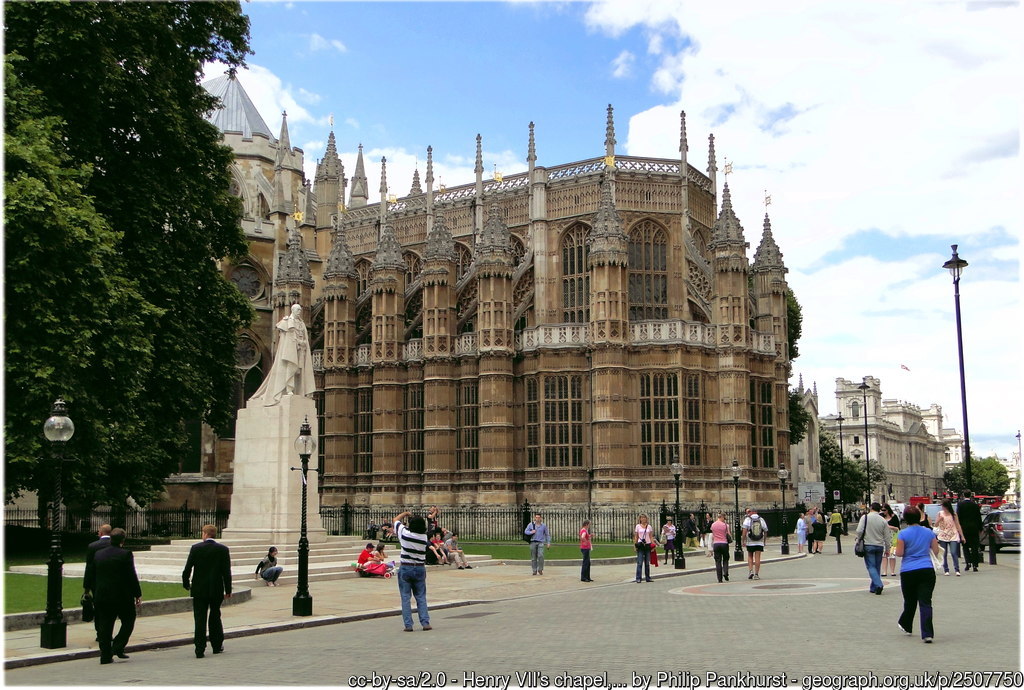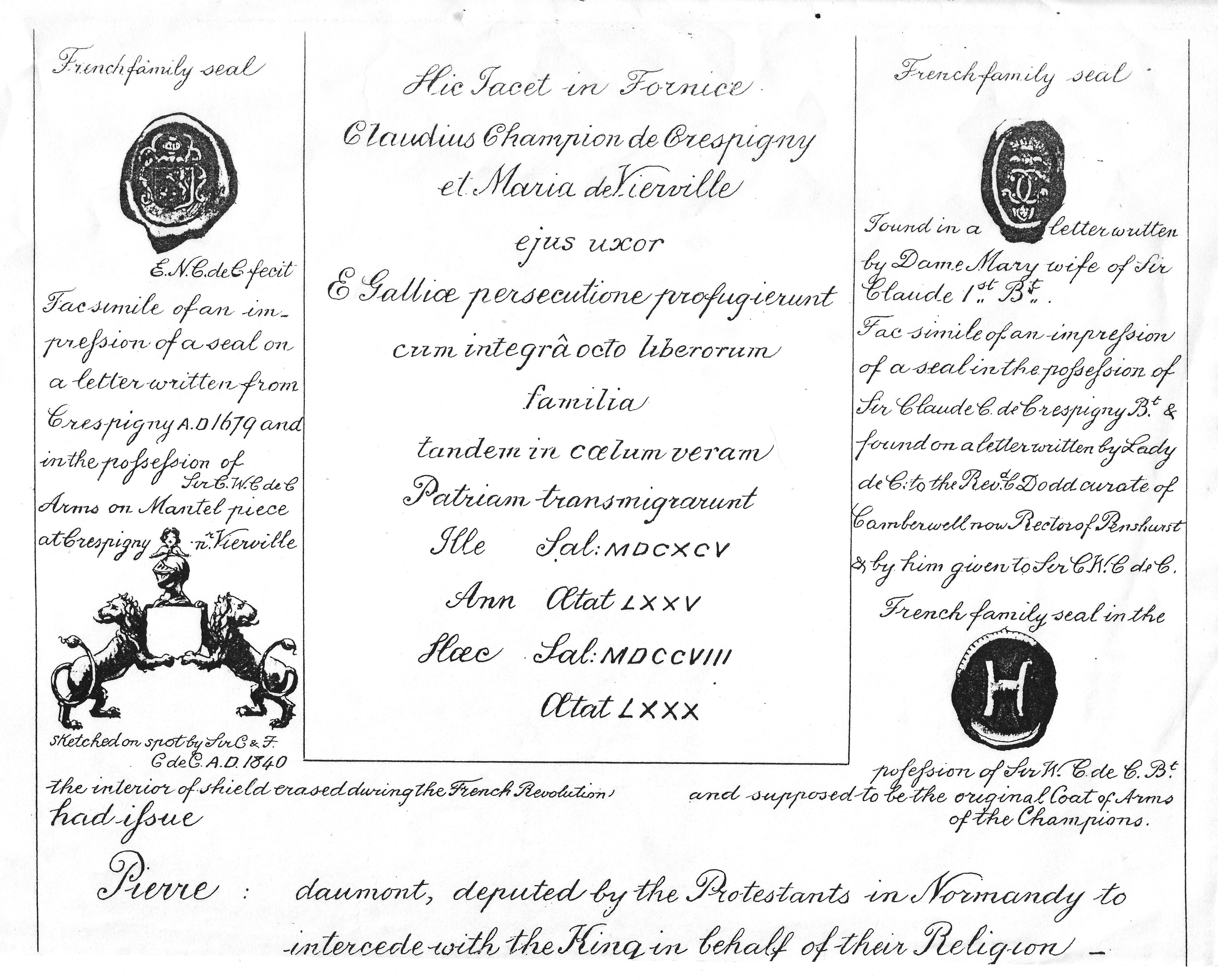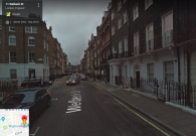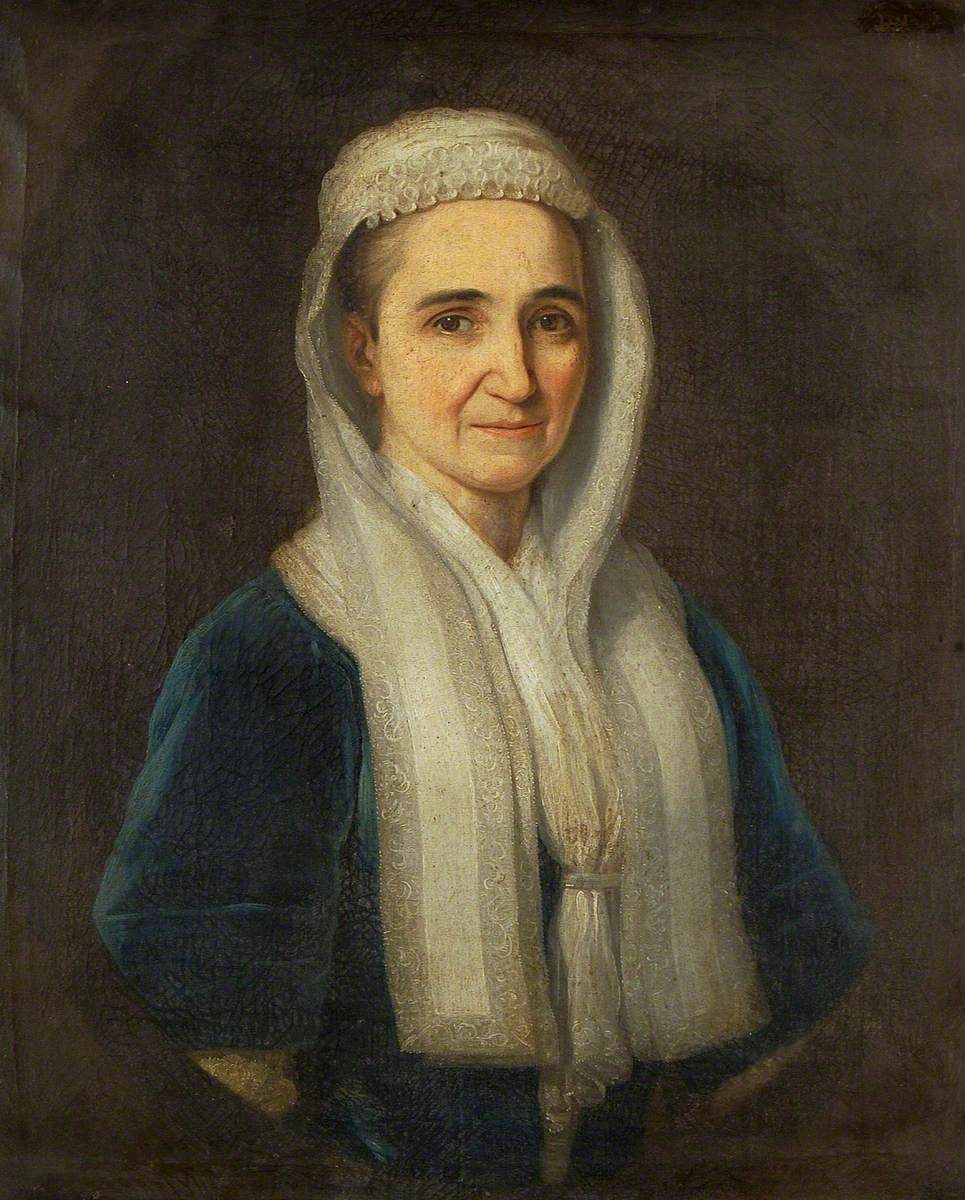Recently, I came across a journal article on “The Education and Training of Gentry Sons in Early Modern England”.* The piece has a direct bearing on my Whitmore local history interests, in particular, on the place of the younger Mainwaring sons in the story of the estate.
In 17th-century England a younger son of the gentry was normally expected to make his own way in the world. Primogeniture gave some assurance of economic independence to eldest son; yonger sons faced less certain, and probably less lucrative, careers in the Law, the Church, or in trade.
The historian of early modern Britain Lawrence Stone wrote:
In all the upper ranks of society primogeniture was the rule. Eldest sons usually inherited the great bulk of the estates of peers, gentry and yeoman farmers. Moreover, eldest sons received a better and longer education, and were better placed to obtain rich wives and good jobs at court and in government, thanks to the more energetic patronage of their fathers. Their life chances were therefore very good. In the sixteenth century younger sons were often left small landed estates, either in outright gift or for life or lives, but by the seventeenth century they could normally expect no more than a modest life annuity which expired at their death. They were therefore downwardly mobile from the very beginning of their careers, and were obliged to feed into the professional and business groups if they were to make their way in the world. If they failed, their children were liable to sink still further down the scale and disappear into the great mass of labourers and small tradesmen.**
Joan Thirsk, an English economic and social historian, taking this argument further, concludes that the vastly better prospects of the eldest sons were made possible by the diminished expectations of the younger sons:
But what of the other children of such families, what of the younger sons? They were also gentry born and bred, but in manhood they had to fend for themselves, and they did not necessarily die as gentlemen. Primogeniture sacrificed them for the sake of their elder brothers. On this aspect of the fortunes of the gentry contemporaries had many observations to offer and held very strong views. Indeed, when one puts to them the question how and at whose expense the gentry rose in the sixteenth and seventeenth centuries, their answer is unambiguous. They rose at the expense of their younger brothers.***
Did the experience of Whitmore younger sons fit the patterns suggested by Wallis, Webb, Stone, and Thirsk? How inferior to his eldest brother—in which aspects, and to what degree—were the prospects of a younger son?
Patrick Wallis and Cliff Webb go beyond the usual case studies and samples, assembling and collating statistics relevant to the matter. The authors examined the records of five heraldic visitations in four counties to determine which families were able to convince the heralds of their gentry status. They then searched for the younger sons of these families in a large dataset, which included records of London apprentices from those counties, the records of Oxford and Cambridge universities, and records of the Inns of Court. Wallis and Webb’s sample includes over 2,000 gentry sons from Bedfordshire, Surrey, Somerset and Westmorland from heraldic visitations between 1530 to 1672.
The article argues that “a rising proportion of gentry children attended university from the later sixteenth century on [and that] at this period attending one of the London Inns of Court was a way into a legal career and the source of a more generally applicable set of skills. London was also both the centre of English commerce and the major supplier of apprenticeship training in this period.”
Of the 2,231 sons
- 302 (14%) went to a university
- 203 (9%) entered an Inn of Court
- 108 (5%) both attended a university and entered an Inn of Court
- 274 (12%) were apprenticed
- 47 (2%) went into the Church (and had been to university)
Nine out of ten apprenticed gentry sons were bound to masters in one of London’s ‘Great Twelve’ companies, which had both a monopoly on high civic office and direct connection with trading companies such as the East India Company.
The study by Wallis and Webb looks at birth order, which seems to suggest that a younger son’s place in the family had a considerable effect on his prospects. Eighteen percent of the oldest sons went to university, 16% spent time at the Inns of Court, and 8% attended both. More elder than younger sons attended one of the universities or Inns of Court. Younger sons were more likely to be apprenticed or go into the church; one in four sixth sons, for example, were likely to be apprenticed, compared with one in 25 elder sons.
I was surprised to learn that apprenticeship in London was considered to be an effective method of giving gentry younger sons a start in life and that almost as many gentry sons became apprentices as studied at Oxford or Cambridge.
Livery companies in medieval London maintained standards and regulated prices within the industry with which it was traditionally associated. The company organised apprenticeships which were necessary to become a qualified tradesman. Apprentices were often required to live under a strict set of rules within their master’s household. At the end of the apprenticeship they claimed their freedom of both the company and the City; some became masters who could take on apprentices of their own, while others remained journeymen, working for wages.
As well as undertaking trade, a member of a company had the right to participate in City politics and governance. For example, liverymen of all City companies are members of Common Hall (Guildhall), which entitles them to vote each year in the election of the Lord Mayor of the City of London.
Livery companies were also charities, helping families whose members had fallen on hard times due to sickness or old age, often by providing alms-houses for impoverished members.
By the 1650s, England’s apprenticeship market attracted the middling sort and gentry, as well as aspiring rural and artisanal youth, particularly in the grand London companies. Nevertheless by the late seventeenth century, apprenticeship rates were falling and many companies had lost the capacity to control the trades whose name they bore. Instead, the ‘custom of London’ required traders to have the freedom of the City through any company so, for example, Clothworkers could be cabinetmakers or flax-dressers. The Ironmongers’ Company was, and is, a City of London institution and charity which, after the early to mid-seventeenth century has had little to do with the ironmongery trade in general.
In 1515, the Court of Aldermen of the City of London settled an order of precedence for the City’s 48 livery companies. This was based on those companies’ contemporary economic or political power. The 12 highest-ranked companies remain known as the Great Twelve City Livery Companies. At present there are 111 City livery companies, all post-1515 companies ranked by seniority of creation. The Great Twelve City Livery Companies are:
- Worshipful Company of Mercers (general merchants)
- Worshipful Company of Grocers (spice merchants)
- Worshipful Company of Drapers (wool and cloth merchants)
- Worshipful Company of Fishmongers (fish and seafood merchants)
- Worshipful Company of Goldsmiths (bullion dealers)
- Worshipful Company of Skinners (fur traders)
- Worshipful Company of Merchant Taylors (tailors)
- Worshipful Company of Haberdashers (silk merchants and clothiers in sewn and fine materials, e.g. velvet)
- Worshipful Company of Salters (salt and chemical traders)
- Worshipful Company of Ironmongers
- Worshipful Company of Vintners (wine merchants)
- Worshipful Company of Clothworkers



Images from Wikimedia Commons and created by user MostEpic, released CC-BY-SA-4.0
I looked at my forebears from Whitmore to see how their experience matched the patterns disclosed by Wallis and Webb.
Heraldic visitations held in Staffordshire recorded the Mainwarings of Whitmore in 1583, 1614, and 1663.

pages 207-8 retrieved through HathiTrust
In 1583 the visitation recorded Edward Mainwaring (1516 – 1586) [Edward 1] and his wife Alice Boghey, their children Edward Mainwaring (1544 – 1604) [Edward 2] who married Jane Cradocke, and also Anne who married Thomas Roose. Also recorded were the children of Edward 2 and Jane: Edward Mainwaring (1577 – 1647) [Edward 3] and John Mainwaring (abt. 1580 – ?), and four daughters. Edward and Jane had 12 children, 6 of whom, including one more son, were born after the visitation.
Edward 3 attended university and an Inn of Court. His brother John was a merchant. His youngest brother Randle was an officer of the Parliamentarian army during the Civil War. He later became a freeman of the Grocers’ Company.
The 1614 visitation recorded Randle and continued another generation from Edward 3 and Jane Craddocke: Edward Mainwaring (1603 – 1674) [Edward 4], John Mainwaring (1610 – 1692), Jane (Mainwaring) Abney (1607 – 1644).
Edward 4 was educated at an Inn of Court but did not attend university. His brother John was at university and entered the church. Jane married James Abney of Willesley Hall, near Ashby-de-la-Zouch.



Portraits of father and son Edward 3 and Edward 4 both painted about 1625
The 1663 visitation repeated the 1614 visitation and added the marriage of Edward 4 to Ann Lomax and four sons and one daughter (and also one granddaughter). Edward 4 and Ann Lomax had 11 children but six of these had died before the visitation. The four surviving sons were:
- Edward Mainwaring (1635 – 1703) [Edward 5] – he was educated at university and attended an Inn of Court
- George Mainwaring (1644 – 1691) was apprenticed in 1661 at the age of 17 and became a freeman of of the Ironmongers’ Company seven years later
- John Mainwaring (1645 – bef. 1689) was apprenticed in 1663 aged about 17 or 18 and became a freeman of the Worshipful Company of Haberdashers in London nine years later. Later documents, such as his marriage licence and the baptism records of his children stated he was a woollen draper.
- Thomas Mainwaring (1647 – 1687) was apprenticed in 1667 to his first cousin Thomas Abney of the Fishmongers’ Company. (Thomas Abney, the son of Jane, was later a knighted Lord Mayor of London.)
In the case of the younger sons: John Mainwaring (1610 – 1692) attended university and entered the church. His nephews, the younger sons of Edward 4 were apprenticed in London to three different companies. In each case those companies, Ironmongers, Haberdashers, and Fishmongers, were ranked in the Great Twelve City Livery Companies.
The history of the Mainwaring family of Whitmore in early modern England seems to follow the pattern suggested by Wallis and Webb. By the standards of the time, the estate’s eldest son was more generously treated and better educated than the younger sons. By many measures their prospects were better, and they can be said—with qualifications, to have enjoyed a more comfortable and assured life. The younger sons, however, a little less bound by the conventions that governed the ambitions of their eldest brother, could and did strive to improve their position, and from time to time, a younger son through his own efforts eclipsed the achievements of the brother who had simply benefited, for no good reason, from the rule of primogeniture.
Related posts and further reading
*Wallis, Patrick, and Cliff Webb. “The Education and Training of Gentry Sons in Early Modern England.” Social History, vol. 36, no. 1, 2011, pp. 36–53. JSTOR, http://www.jstor.org/stable/41060821.
**Stone, Lawrence. “Social Mobility in England, 1500-1700.” Past & Present, no. 33, 1966, pp. 16–55. JSTOR, http://www.jstor.org/stable/649801.
***Thirsk, Joan. “Younger Sons in the Seventeenth Century.” History, vol. 54, no. 182, 1969, pp. 358–77. JSTOR, http://www.jstor.org/stable/24407104.
- U is for university
- I is for Inns of Court
- Y is for younger sons looking at the Georgian and Victorian era
- Mainwaring younger sons go to India: Georgian era
- Jemmett Mainwaring and the start of a Mainwaring naval tradition – part 1: in the late 18th century a number of Mainwaring younger sons joined the Royal Navy
Wikitree:
- Edward Mainwaring (1577 – 1647) [Edward 3, the 3rd Edward Mainwaring to inherit Whitmore Hall] attended university and an Inn of Court
- Edward Mainwaring (1603 – 1674) [Edward 4] educated at an Inn of Court but did not attend university
- Edward Mainwaring (1635 – 1703) [Edward 5] educated at university and attended an Inn of Court
- George Mainwaring (1644 – 1691) apprenticed Ironmongers’ Company
- John Mainwaring (1645 – bef. 1689) apprenticed Worshipful Company of Haberdashers
- Thomas Mainwaring (1647 – 1687) apprenticed to his first cousin Thomas Abney of the Fishmongers’ Company
- Jane (Mainwaring) Abney (1607 – 1644)
- Thomas Abney (1640 – 1721) Fishmongers’ Company; was later a knighted Lord Mayor of London
- John Mainwaring (1610 – 1692) attended university and entered the church
- Edward Mainwaring (1603 – 1674) [Edward 4] educated at an Inn of Court but did not attend university
- John Mainwaring (abt. 1580 – ?), brother of Edward 3, was a merchant
- Randle Mainwaring (abt. 1588 – 1652), brother of Edward 3, Grocers’ Company; Mercer and trader in partnership with his brothers-in-law Joseph and Nathaniel Hawes
This post was created as part of Amy Johnson Crow’s 52 Ancestors in 52 Weeks challenge. This week’s theme is “Earning a Living.”
















